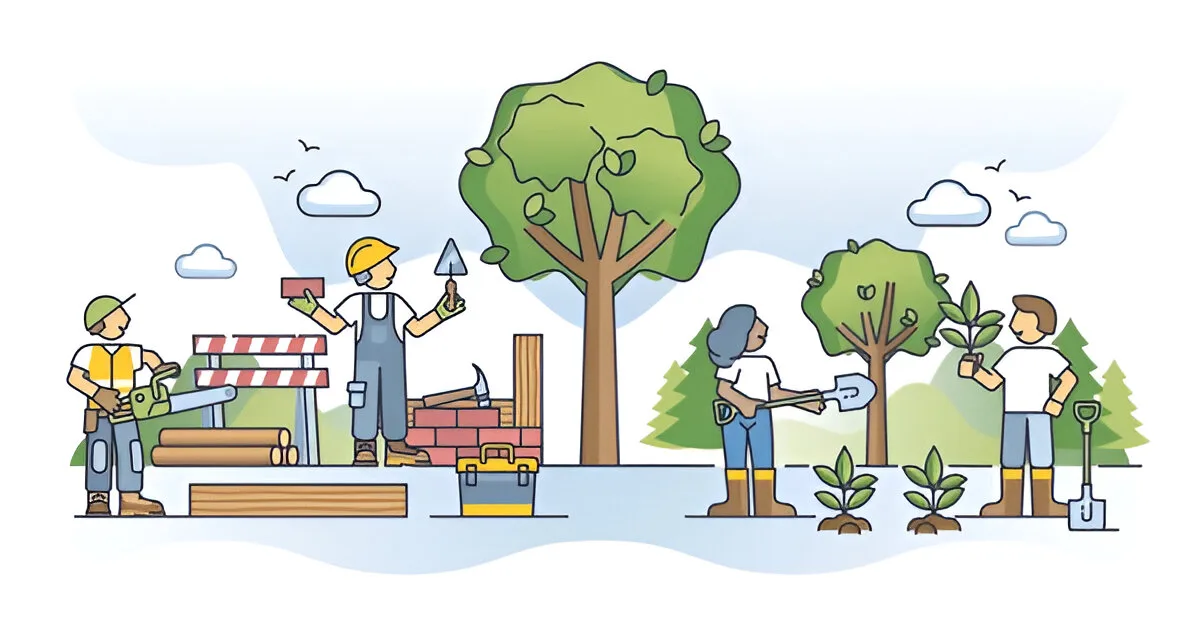Exploring the Contrast Between Country and City Life on the East Coast
The East Coast of the United States is a region filled with contrasts. From towering skylines to quiet farmlands, each state exemplifies an intriguing blend of bustling city culture and rural tranquility. These differences are not just geographic—they shape culture, pace of life, and even people’s perspectives. Whether you’re drawn to the rush of city streets or the peaceful hum of country roads, the East Coast has something for everyone. In this post, we’ll look closely at five states—Maryland, Virginia, Washington D.C., New Jersey, and Pennsylvania—and compare their urban and rural landscapes.
Maryland: A State of Suburban Balance
City Life in Baltimore
Baltimore is Maryland’s largest city, offering a gritty yet vibrant urban atmosphere. Known for its Inner Harbor, historical districts, and arts culture, Baltimore is full of character. The city is a hub for medical research, particularly around Johns Hopkins, and is home to diverse neighborhoods like Fells Point and Mount Vernon. With public transportation, walkable areas, and an emerging tech scene, it attracts young professionals and creatives. Despite its growth, Baltimore still struggles with inequality and urban challenges that add complexity to life there. It’s a city that feels lived-in and real, with a deep sense of local pride.
Country Living in Western Maryland
Venture west to areas like Cumberland, Hagerstown, or Deep Creek Lake, and you’ll find a completely different Maryland. The landscape is filled with mountains, forests, and rolling farmland, offering a serene alternative to city life. Outdoor pursuits are a beloved way to pass the time in this area, like hiking, fishing, and skiing, and the slower pace fosters tight-knit communities. Agriculture is more significant in daily life, and many residents are closely connected to the land. You’re more likely to see pickup trucks and farm markets than cafes and condos. This part of Maryland is ideal for those who want space, peace, and a close relationship with nature.
Bridging the Gap: Life in Annapolis
As the state capital, Annapolis offers a unique blend of coastal beauty, history, and a laid-back lifestyle. Nestled on the Chesapeake Bay, it’s known for its colonial architecture, vibrant maritime culture, and the prestigious U.S. Naval Academy. Life here moves at a slower pace than in Baltimore or D.C., but residents still enjoy upscale dining, boutique shopping, and waterfront festivals. The city has a strong sense of tradition, with charming neighborhoods, sailboats dotting the harbor, and walkable streets full of character. Annapolis appeals to retirees, families, and professionals alike who are seeking a picturesque community with both cultural depth and small-town comfort. Its location also offers convenient access to both Baltimore and Washington, D.C., making it ideal for commuters who crave scenic surroundings.
Virginia: Where the South Meets the Suburbs
Urban Energy in Northern Virginia
Northern Virginia, or NoVA, includes urbanized counties like Arlington, Fairfax, and Alexandria that function almost as extensions of Washington D.C. These areas are dense, dynamic, and economically strong, especially in the tech and government sectors. The Metro connects much of Northern Virginia to downtown D.C., making it ideal for commuters. The neighborhoods are full of high-rise apartments, trendy restaurants, and diverse communities. The area’s high quality of life and cultural diversity make it appealing to a broad spectrum of residents, from young professionals to families. The pace is fast, but amenities and opportunities are everywhere.
Country Charm in Shenandoah Valley
Further west, Virginia’s Shenandoah Valley unfolds with wide-open landscapes and a thoroughly different vibe. Rolling hills, picturesque farms, and quaint small towns like Staunton and Luray characterize this area. Life here is more relaxed and often revolves around agriculture, local events, and outdoor activities like hiking or canoeing. Many people here enjoy strong community ties and a slower, more intentional way of living. The cost of living is lower, and there’s a deep appreciation for tradition and history. This rural environment appeals to those seeking simplicity and connection to nature.
The Hybrid: Richmond and Surroundings
Richmond, the state capital, offers a unique mix of city life with southern charm. It’s smaller than D.C. or Baltimore, but it has a strong arts and foodie scene, plus a vibrant community of students and creatives. The pace is more manageable, and you can easily drive to the country or mountains within an hour. Suburbs like Short Pump or Midlothian offer great schools and quieter living without losing access to urban benefits. Richmond also carries historical significance, adding depth to its modern growth. It’s an ideal location for those who want a balanced lifestyle without overwhelming crowds.
Washington D.C.: City at Its Core, Suburbs at Its Edge
The Urban Pulse of the Nation’s Capital
Washington, D.C, is the heartbeat of American politics and one of the most iconic urban centers in the country. The city is compact, walkable, and full of landmarks like the Capitol, National Mall, and Smithsonian museums. It’s a city of constant change, with people coming and going from around the world. Living here means fast-paced days, public transit, and an ever-evolving food and arts scene. High-density living is standard, with rowhouses and apartment buildings dominating the landscape. While exciting, city life in D.C. can also be expensive and demanding.
Quiet Corners Within the District
Despite its urban core, D.C. has residential neighborhoods that offer a break from the noise. Areas like Capitol Hill, Tenleytown, and Cleveland Park feature tree-lined streets, local parks, and a more laid-back atmosphere. Families, retirees, and long-term residents often settle in these neighborhoods for their charm and walkability. Farmers markets, local bookstores, and historic homes create a strong sense of place. You can enjoy the benefits of city life while feeling like you’re in a small town. These pockets offer a more relaxed urban experience with a strong community feel.
Country Life Just Across the Border
Drive just 30 minutes outside of D.C., and you’re in horse country or wine country. Towns like Poolesville (Maryland) or Clifton (Virginia) are surrounded by farmland and forest. These areas offer a rural escape with fresh air, wide open spaces, and peaceful living. Many residents here commute into the city for work but return to tranquility at the end of the day. Local farms, vineyards, and nature trails are part of daily life. It’s the best of both worlds for those who want to be near the action but live with more space and quiet.
New Jersey: A Tale of Two Worlds
Fast-Paced Cities Like Newark and Jersey City
Newark and Jersey City are New Jersey’s urban powerhouses, closely connected to New York City by train and tunnel. These cities are bustling with activity, featuring a mix of high-rise apartments, corporate offices, and cultural institutions. Diversity is one of their biggest strengths, with neighborhoods full of different languages, cuisines, and traditions. Life moves quickly, and public transit is a necessity for many residents. While redevelopment has brought new opportunities, challenges like congestion and housing affordability remain. Still, these cities are an attractive option for those craving city life without the Manhattan price tag.
Quiet and Quirky in South Jersey
Head south and you’ll find a completely different New Jersey. South Jersey is filled with forests, farmland, and small towns that feel a world away from the northern metro area. Life here is more relaxed, with local diners, family farms, and close-knit communities. The Pine Barrens and Delaware River provide scenic beauty and outdoor recreation. People here often know their neighbors and value a slower, simpler lifestyle. It’s an excellent place for those who prioritize space, affordability, and a sense of tradition.
The Shore Town Blend
New Jersey’s coastline uniquely blends beach life, small-town charm, and seasonal energy. Towns like Asbury Park, Ocean City, and Cape May can feel quiet and peaceful in the off-season, but come alive in the summer. Many of these towns have walkable downtowns, unique shops, and a nostalgic feel. They attract both vacationers and year-round residents who enjoy coastal living. Depending on the season, a shore town can feel like a sleepy village or a bustling mini-city. This coastal lifestyle offers a special kind of balance not found in many places.
Pennsylvania: History, Hills, and Hometowns
City Living in Philly and Pittsburgh
Pennsylvania’s two largest cities—Philadelphia and Pittsburgh—offer rich urban experiences steeped in history and innovation. Philadelphia is distinguished by its historical landmarks, vibrant neighborhoods, and sports culture, while Pittsburgh mixes its industrial past with a strong presence in education and healthcare. Both cities are walkable, with diverse food scenes and active nightlife. Public transportation is available, though many residents still rely on cars. City life here can be intense but rewarding, with access to culture, jobs, and community. For those who thrive on movement and variety, these cities are full of opportunities.
The Rural Heart of Central PA
Outside the urban centers, Pennsylvania becomes a landscape of fields, hills, and forests. Central PA includes towns like State College, Altoona, and Lancaster, where life moves at a slower pace. Farming, hunting, and small businesses shape the local economy and culture. The Amish community in Lancaster adds a layer of cultural richness and tradition. People in these areas value family, faith, and self-reliance. It’s an excellent place for those who prefer quiet, close communities and outdoor living.
Suburban Life in the Philly Burbs
Philadelphia’s suburbs—like King of Prussia, Doylestown, and Media—offer an ideal middle ground for many families. These areas provide great schools, shopping centers, and a contrast of modern developments with charming historic homes. The vibe is more relaxed than the city, but still connected to its energy and opportunities. Parks and recreation areas give residents space to unwind, and commuting options like regional rail make access to Philly convenient. There’s a strong sense of neighborhood identity and civic engagement. For many, the suburbs offer the best of both rural calm and city convenience.
Final Thoughts
The East Coast is more than just a string of cities—it’s a diverse stretch of lifestyles, landscapes, and local identities. Whether you’re living among skyscrapers or surrounded by farmland, the culture and rhythm of daily life are shaped by where you are. From the high energy of D.C. and Philadelphia to the quiet fields of central Pennsylvania or the rolling hills of rural Virginia, there’s a place for every personality. If you’re planning to move, professional movers can help navigate the transition, whether you’re relocating to a fast-paced urban environment or a serene rural setting. Each state featured—Maryland, Virginia, Washington D.C., New Jersey, and Pennsylvania—has its own version of the city-country contrast. Exploring them can help you find the environment that truly feels like home.

